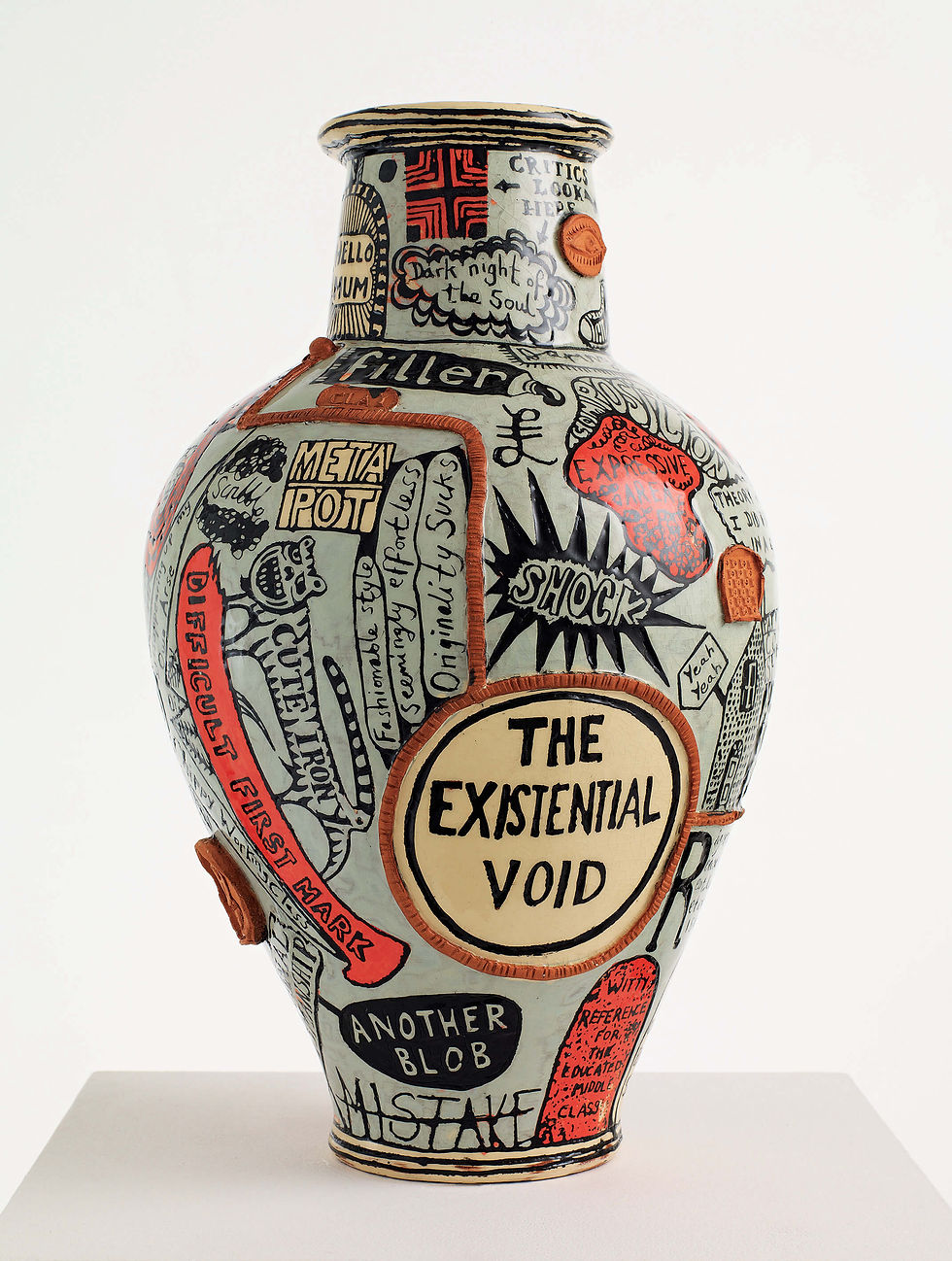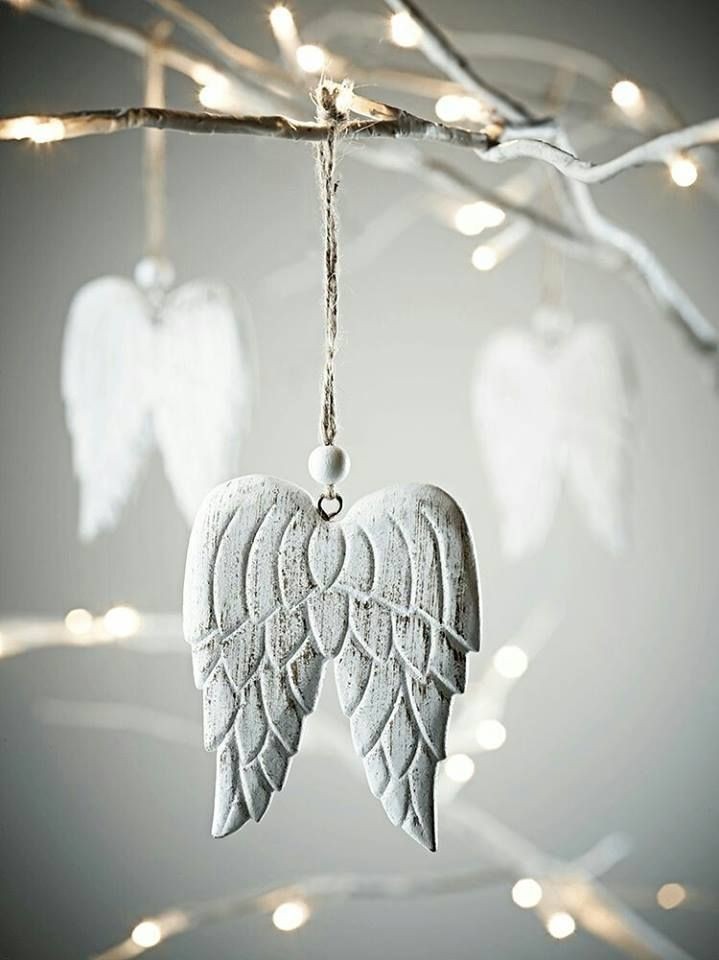Grayson Perry: Redefining Ceramics....
- Koöko Fleurs
- Oct 17, 2024
- 4 min read
Updated: Nov 15, 2024

Pottery making in art therapy is more than a creative outlet; it is a path to healing and self-discovery.
Through pottery, both as a therapeutic tool and an art form, individuals can find hope, connect with the nature of things, and explore the rich tapestry of human emotions and experiences.
Each piece of clay that is molded carries deep ritual meanings and symbolism. For many, it embodies the nature of things, the essence of life, and the ambiguity that lies within. This form of art therapy aligns closely with the practices of native and aboriginal art, where the process itself holds significant spiritual and emotional value.
Pottery making, a timeless craft, has found a profound place in the world of art therapy. The tactile experience of molding clay can serve as a powerful therapeutic tool, helping individuals explore their emotions, build resilience, and connect with their inner selves. Through the act of creation, pottery can unlock a deep sense of identity, hope, and connection to nature.
Among the most influential figures in the realm of contemporary ceramics is Grayson Perry. Born on March 24, 1960, in Chelmsford, Essex, England, Perry has transformed the perception of pottery through his vibrant, thought-provoking works. His journey into ceramics began in his childhood, and by the early 1980s, he had fully embraced the craft while living in a squatters' community in London's Camden Town.
Grayson Perry has long championed the power of ceramics as a medium for self-expression, self-discovery, and healing. Perry’s work, often characterized by its vibrant colors and intricate designs, goes beyond aesthetics; it delves deep into personal and societal issues, making ceramics a powerful conduit for personal exploration and emotional release.
Perry's art is renowned for its classical forms adorned with vibrant colors and intricate designs. His work often tackles social issues such as domestic violence, child abuse, and cultural stereotypes, combining decorative appeal with poignant commentary. This unique approach earned him the Turner Prize in 2003, making him the first potter to receive this prestigious award.
Retrospective at Fondation Cartier
The Fondation Cartier pour l’art contemporain in Paris is presenting the first major retrospective of Grayson Perry’s work in Europe. This exhibition, running from March 28, 2025, to October 26, 2025 , showcases a comprehensive collection of Perry’s ceramics, tapestries, and other artworks. Visitors will have the opportunity to witness the evolution of his artistic journey, from his early experiments with clay to his most celebrated pieces.
The retrospective delves into Perry's exploration of identity, culture, and human experience. Through his intricate and vibrant creations, Perry invites viewers to contemplate the deeper meanings and emotions embedded in each piece. His ability to merge traditional pottery techniques with contemporary themes and narratives has redefined the boundaries of ceramics.
Ceramics as a Form of Self-Discovery
Ceramics, as a tactile and malleable medium, allows individuals to explore their inner thoughts and emotions in a tangible form. The process of molding clay can be incredibly meditative, offering a sense of calm and focus that encourages introspection. For Perry, ceramics provided a means to explore his identity and personal history, allowing him to create narratives that reflect his experiences and struggles.
One notable example is Perry's "Map of Nowhere" (2008), a ceramic piece that features a complex map of his mind. This work encapsulates his personal journey, highlighting his inner turmoil and quest for meaning. By externalizing his thoughts and emotions onto a ceramic canvas, Perry not only found a way to understand himself better but also offered viewers a glimpse into his psyche, fostering a sense of connection and empathy.
Healing Through Ceramics
The therapeutic potential of ceramics lies in its ability to provide a physical outlet for emotional expression. Working with clay can be a grounding experience, helping individuals to process and release pent-up emotions. Perry's works often address themes of trauma, identity, and societal norms, using ceramics as a medium to confront and heal from these issues.
For instance, Perry's "The Tomb of the Unknown Craftsman" (2011) is a poignant tribute to anonymous artisans throughout history. This work is a testament to the healing power of art, celebrating the resilience and creativity of individuals who, like Perry, have used ceramics to navigate their personal struggles. Through this piece, Perry acknowledges the contributions of countless craftsmen, highlighting the universal nature of healing through artistic creation.
Examples and Detailed Insights
Grayson Perry’s ceramics are rich with autobiographical elements, making them a powerful tool for storytelling and self-reflection. His ceramic vases, for example, often feature detailed illustrations and inscriptions that reveal his thoughts on contemporary life, gender identity, and societal expectations. These works invite viewers to reflect on their own experiences and emotions, fostering a sense of shared humanity.
Moreover, Perry's engagement with community projects, such as the "House for Essex" (2015), underscores the communal aspect of ceramics. This project, a collaboration with architect Charles Holland, involved the creation of a ceramic-clad house that serves as both an artwork and a space for reflection. The intricate ceramic tiles depict stories from the life of a fictional Essex woman, encouraging visitors to contemplate their own narratives and find solace in the shared human experience.
In conclusion, Grayson Perry’s work demonstrates how ceramics can serve as a powerful tool for self-discovery and healing. By transforming his personal experiences into ceramic art, Perry has not only gained a deeper understanding of himself but also created a space for others to explore and heal from their own emotional journeys. Through the tactile and expressive nature of ceramics, individuals can find a sense of peace, connection, and resilience.














Comments